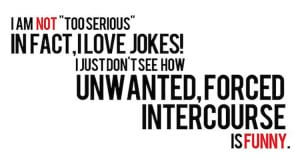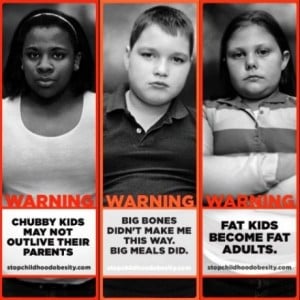
Hands tear up the Constitution in protest.
In October, I could only read, horrified, as Justice Ruth Bader Ginsburg called Colin Kaepernick’s peaceful protests against police violence “dumb and disrespectful.”
I was completely flabbergasted that she went on to say, “If they want to be stupid, there’s no law that should be preventative. If they want to be arrogant, there’s no law that prevents them from that.”
I wanted to ask her what exactly was “stupid” or “arrogant” about protesting the rampant, anti-black police violence happening across this country?
She later apologized, saying her comments were “harsh and dismissive.” But I haven’t been able to let this go. How was this powerhouse woman, often looked up to as a feminist icon, actively dismissing something so important?
Maybe more importantly, how could this woman be so patronizing and uninformed before making such a statement? Although she recognized Kaepernick’s legal rights to protest, what did it mean that she didn’t agree with his protest?
This was frightening because no matter who you are, your opinions and biases are going to affect your work.
In the past few years, the Supreme Court of the United States (SCOTUS) has even acknowledged that implicit bias affects policy and law. So although the Supreme Court justices are supposed to remain “objective” and “impartial,” this isn’t how it works in reality.
Even Supreme Court justices interpret the law and make rulings based on both legal precedent and their subjective experiences.
I can’t put the entire history of the Supreme Court on RBG’s shoulders. She has protected marginalized people with her decisions while she has been a justice. It’s also true that the court’s decisions sway based on all nine justices.
But it’s deeply troubling to think that one of our “liberal” justices could think that protesting police brutality is “dumb.”
The fact remains that SCOTUS has often upheld racist laws and systemic racism in the criminal justice system. With many of their rulings, SCOTUS has made it extremely difficult to challenge racism in the police and in the courts.
Just a handful of those Supreme Court cases can be found below. Let’s examine how they reveal a connection between individual biases and the bigger picture of systemic racism.
1. Native American Tribal Courts Have Basically No Jurisdiction
What are the stereotypes that hurt Native people in the US? They often have to do with characterizing Native people as “savage” and “uncivilized.”
And it’s no wonder that these stereotypes have persisted, when the Supreme Court makes rulings based on these characterizations. One of the very first rulings was 1831’s Cherokee Nation v. Georgia, which essentially characterized Native nations as “wards” and the US as their “guardian.”
In 1885, Congress passed the Major Crimes Act, just one of many laws limiting tribal sovereignty. Congress stated that the federal government, and not tribal courts, have jurisdiction over certain “Indian-on-Indian” crimes, even when committed on Native land.
The Major Crimes Acts was passed after a SCOTUS case called Ex parte Crow Dog. Originally, SCOTUS found that federal courts do not have jurisdiction to try any Natives that kill other Natives on Reservations. Although this case affirmed tribal sovereignty, it did so while reaffirming racist beliefs.
Justice Stanley Matthews wrote that US courts judge Natives “by superiors of a different race… which is opposed to the traditions of their history, to the habits of their lives, to the strongest prejudices of their savage nature.”
In 1886, The Supreme Court heard United States v. Kagama, which questioned the constitutionality of the Major Crimes Act. This time around, SCOTUS ruled against tribal sovereignty. The Major Crimes Act was deemed constitutional, because of the “weakness and helplessness” of Native people.
It also became an important case that set a precedent against tribal sovereignty. Since then, a number of cases have taken jurisdiction out of Native hands. Kirke Kickingbird explains that these cases “led to an overly broad and often destructive exercise of federal power in Indian affairs.”
Congress passed Public Law 280 in 1953, which “gave six states… extensive criminal and civil jurisdiction over tribal lands” with Native consent. However, SCOTUS ruled in 1979’s Washington v. Confederated Bands and Tribes of Yakima Indian Nation that Washington state had partial criminal jurisdiction over Native people even without consent.
In 1978’s Oliphant v. Suquamish Indian Tribe, SCOTUS ruled that tribal courts do not have jurisdiction over non-Natives who commit crimes on Native land without Congress’s permission. This was reinforced in 1990 by Duro v. Reina; tribal courts had no jurisdiction over Native Americans who were not a member of that nation.
These rulings are important because they reinforced racist ideologies against Native peoples. SCOTUS ruled this way believing that Native people were too “uncivilized” and “savage” to maintain their own jurisdiction.
Like Sarah Deer explains in Color of Violence: the INCITE! Anthology, these laws and their effects have only continued the violence and trauma of colonization. These rulings have fueled assimilationist policies like Indian boarding schools and have cleared the way for non-Natives to continue to assault and harm Native people with impunity.
According to Mending the Sacred Hoop, non-Native violence against Native women is disproportionately high. Even though acts such as the Violence Against Women Act partially help Native assault and abuse survivors, these don’t do enough.
2. Japanese Internment Was Perfectly Constitutional
Today, East Asian Americans are often characterized as “hostile Others” and “perpetual foreigners,” regardless of citizenship status.
These stereotypes can be traced back to the bombing of Pearl Harbor in 1941, when the United States officially entered World War II. Feeding into the fear of “Yellow Peril,” which had negatively harmed East Asian migrants and first-generation folks for decades, the federal government began to enact a number of laws restricting the civil rights of Japanese Americans stateside.
This really came to a head with President Roosevelt signing Executive Order 9066. This gave the government carte blanche to enact discriminatory laws against Japanese Americans in the name of “safety and security.” Japanese Americans on the West Coast were subject to strict curfews and later were deported to internment camps.
The majority of those interned were United States citizens, and many of the rest had “lived in the United States for decades, but who, by law, were denied citizenship.”
SCOTUS upheld these discriminatory laws in a number of cases.
In 1943, with Hirabayashi v. United States and Yasui v. United States, SCOTUS ruled that the curfews against Japanese Americans were legal. They declared that it was all done in the name of “wartime necessity.”
In 1944, SCOTUS confirmed that the internment camps were indeed constitutional with Korematsu v. United States. Justice Hugo Black claimed in the decisions that internment camps were not racist at all.
He wrote,“Korematsu was not excluded from the Military Area because of hostility to him or his race. He was excluded because we are at war with the Japanese Empire… the military urgency of the situation demanded that all citizens of Japanese ancestry be segregated from the West Coast…”
Interestingly, SCOTUS also ruled on a similar case on the same day as Korematsu, with a different ruling. In ex parte Endo, they ruled that it was illegal to detain a “loyal and law-abiding citizen.” To the Supreme Court, Mitsuye Endo, the plaintiff, fulfilled that perfectly because she “was Methodist, had a brother in the army, and had never been to Japan.”
These cases have never been overturned, though President Ford formally rescinded Executive Order 9066 about thirty years later, in 1976. It also wasn’t until the Civil Liberties Act of 1988 that the state issued reparations and formal apologies. However, by then, the damage had been done.
These rulings only reinforced racist stereotypes against Japanese Americans and other East Asians. They reaffirmed that there was only one way to be “American,” which is assimilation into whiteness with no cultural, national, or religious ties to anything else.
Like many of these cases, these rulings proved that “citizenship” does not automatically mean equitable protections. SCOTUS ruled that regardless of citizenship, anyone who is an Other deserves to be feared and subdued. They allowed the state to do whatever they want to marginalized people.
As activist Yuri Kochiyama has said, “Historically, Americans have always been putting people behind walls.”
3. Racist Laws Are Constitutional If They ‘Weren’t Meant’ To Be Racist
When it comes to interpersonal racism, impact is more important than intent. How racism negatively affects a person emotionally, mentally, and/or physically is what matters.
But in 1976, SCOTUS determined that, legally, this isn’t true.
In Washington v. Davis, two Black applicants sued the Washington D.C. police department. Because Black applicants disproportionately failed the verbal test used for hiring, the applicants said it was unconstitutional.
SCOTUS took the side of the police, stating, “Our cases have not embraced the proposition that a law or other official act, without regard to whether it reflects a racially discriminatory purpose, is unconstitutional solely because it has a racially disproportionate impact.”
Or, in other words: A law isn’t unconstitutional just because it has a racist effect. It’s unconstitutional if you can prove that the law was both created for a racist reason and had a racist outcome.
SCOTUS upheld this idea in 1987 in McCleskey v. Kemp. This landmark case has been cited as one of the most contested and worst ruling in United States history.
A 1987 LA Times article stated, “I predict that in the future, historians will look back on McCleskey and judge it to be yet another of the court’s great failures – along with Dred Scott, Plessy, Korematsu and Hirabyashi.” In 1994, Justice Lewis Powell admitted that he was wrong to vote with the majority.
Warren McCleskey, a Black man, was sentenced to the death penalty for killing a white man. He appealed this ruling because of a very racist norm. According to the Baldus study, Black people who killed whites were almost four times more likely to be sentenced to death than if they killed Black folks.
In McCleskey, SCOTUS ruled that, even though the death penalty had a racially discriminatory impact, the study was not enough to prove a discriminatory intent. They also claimed “at most, the Baldus study indicates a discrepancy that appears to correlate with race. Apparent disparities in sentencing are an inevitable part of our criminal justice system.”
These are vitally important rulings when it comes to racism in the judicial system. They proved that SCOTUS legally upholds systemic racism.
In The New Jim Crow, Michelle Alexander explains: “…The Court’s opinion was driven by a desire to immunize the entire criminal justice system from claims of racial bias…. Racial discrimination, the court seemed to suggest, was something that simply must be tolerated in the criminal justice system, provided no one admits to racial bias.”
4. The Police Can Stop and Detain You for ‘Suspecting’ You’re Committing a Crime
Black people are constantly under suspicion for wrongdoing. This is not because we have done anything wrong, but because of implicit biases against us that say “their personhood is inherently criminal.” This means that disproportionately, we are profiled, stopped and punished by police simply for existing.
In 1968, SCOTUS’s ruling in Terry v. Ohio essentially supported this kind of bias and racial profiling.
Known as the “stop and frisk” case, SCOTUS ruled that when a police officer thinks someone is suspicious, that officer “is entitled for the protection of himself and others in the area to conduct a carefully limited search of the outer clothing of such persons in an attempt to discover weapons which might be used to assault him.”
SCOTUS ruled that this does not violate anyone’s Fourth Amendment rights against searches and seizures. That’s because SCOTUS also determined that there is a difference between a “frisk” and a “search.” Frisking was fine, but searching required a warrant.
This distinction is upheld in 1983’s Florida v. Royer. While the police are in their full rights to approach and stop someone for their behavior, they need a warrant to search their person.
The 2000s court only continues to expand police power in stops.
In 2004’s Hiibel v. Sixth Judicial District Court of Nevada, they ruled that Nevada’s stop-and-identify law was constitutional. They affirmed that police could stop anyone who they assumed was suspicious or criminal, and stated that the police had a right to ask for identification to confirm if the suspicion was right or not.
This year, SCOTUS decided on Utah v. Strieff, another case having to do with stops and identification. In this case, SCOTUS ruled that police searching and arresting someone after an illegal stop was constitutional, if they discover a reason to search and arrest that person during the illegal stop.
In their own words, “We hold that the evidence the officer seized as part of the search incident to arrest is admissible because the officer’s discovery of the arrest warrant attenuated the connection between the unlawful stop and the evidence seized incident to arrest.”
These cases are important because both implicit and explicit biases are a part of everyday policing. Who is seen as inherently criminal or dangerous has everything to do with one’s race. The data shows that across multiple cities like Chicago, New York, and Philadelphia, “stop and frisks” are disproportionately used on Black and Latinx folks.
***
As with many of these cases, some justices did not agree with the outcome. And that’s important to remember, especially when their rulings feel overwhelming.
In her Utah dissent, Justice Sonia Sotomayor explained how dangerous it was that the Supreme Court continued to condone police that systematically oppresses marginalized people:
For generations, black and brown parents have given their children “the talk”… all out of fear of how an officer with a gun will react to them… We must not pretend that the countless people who are routinely targeted by police are “isolated”… unlawful police stops corrode all our civil liberties and threaten all our lives. Until their voices matter too, our justice system will continue to be anything but.
Just like our laws, none of our Supreme Court justices are “objective.”
Their rulings are not only based off of precedent and technicalities, but their own personal experiences. Whether intentionally or unconsciously, their biases show up in how they vote and how they shape the laws we have to live under.
While these rulings might make it seem hopeless to challenge systemic racism in the legal system, it’s not impossible. We have to keep challenging our justices and the laws that were never made for us. New justices will be elected, cases can be overturned, and what is legal or not is constantly changing.
We have to keep fighting, both within and outside of the system, to ensure that we create a transformative and liberatory future.
***
I would like to thank the wonderful group of lawyers and activists who took the time out to review and critique this article. Without your help, I would not have been able to summarize and discuss many of these complex legal issues. So, many, many thanks to Joelle Lingat, Kevin Marcus-Kanesaka, Megan Arriola, S.B. Stewart-Laing, Tomoyo Joshi, and Valerie Loubriel.
[do_widget id=’text-101′]
Jennifer Loubriel is a Contributing Writer for Everyday Feminism and a mixed race Afro-Puerto Rican from the Bronx. She is also a queer mujerista and child abuse survivor. She earned her B.A. from Oberlin College in Religion and English, and identifies as an amateur Latinx ethicist and a speculative fiction enthusiast. She is a co-founder and moderator over at the Tumblr Women of Color, in Solidarity, a safe space for and by women of color. You can usually find her writing about apocalypse and diaspora, rewatching her favorite TV shows, or taking selfies with her family’s cat.
Search our 3000+ articles!
Read our articles about:
Our online racial justice training
Used by hundreds of universities, non-profits, and businesses.
Click to learn more




















